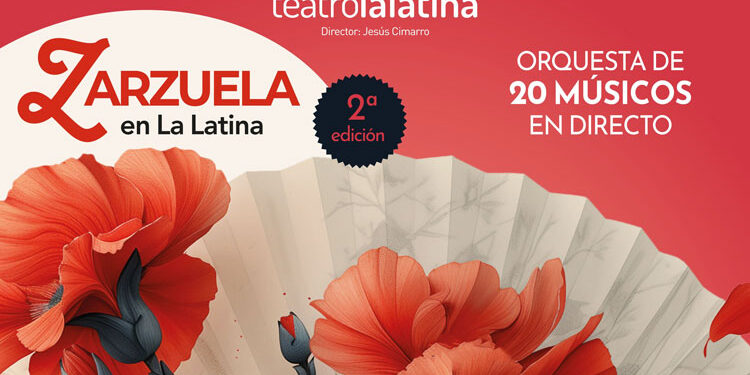From today until August 31st, the second edition of Zarzuela en La Latina will be part of the main program at Teatro La Latina in Madrid, coinciding with the San Cayetano, San Lorenzo, and La Paloma festivals in Madrid’s most traditional neighborhood. Tickets can be purchased at this link.
Four major titles can be enjoyed at Teatro La Latina: La del manojo de rosas; Agua, azucarillos y aguardiante; Doña Francisquita and El barberillo de Lavapiés. A unique show with a live 20-piece orchestra.
As with last season, the Zarzuela Season Ticket has been created for this second edition of Zarzuela en La Latina, allowing you to enjoy all four titles at a more affordable price than purchasing individual tickets.
From July 23rd to 27th, La del Manojo de Rosas (The Handful of Roses), a zarzuela, classified as a lyrical farce in two acts, divided into six scenes, with lyrics by Anselmo C. Carreño and Francisco Ramos de Castro, and music by maestro Pablo Sorozabal, premiered to great acclaim at the Fuencarral Theater in 1934. The action takes place in 1934, in a Madrid neighborhood square where there is a garage, a bar, and a flower shop called “La del Manojo de Rosas”.
From July 30th to August 3rd, Agua, azucarillos y aguardiente (Water, Sugars, and Liquor), in which Asia, a cheesy girl, and her mother, Doña Simona, move from their village, Valdepatata, to Madrid, where they barely have enough money to pay the rent. Asia is madly in love with Serafín, who tries to convince Pepa, who runs a kiosk, to give her lover’s mother a sleeping pill, but she refuses. Pepa’s partner, Lorenzo, is the one who does it. Doña Simona pretends to be asleep, but it’s Serafín who falls asleep, just as the mother, her daughter, and Pepa had planned together. Manuela and Pepa argue over a street vendor’s stall and an old love they share. Vicente and Lorenzo try to mediate this conflict, which ultimately ends with a dance at the San Lorenzo festival, while Serafín becomes the victim of a peculiar robbery.
From August 6 to 17, Doña Francisquita, a zarzuela known as a “lyric comedy,” in three acts, with a libretto by Federico Romero and Guillermo Fernández-Shaw, based on the comedy La discreta enamorada by Lope de Vega, and music by maestro Amadeo Vives, premiered at the Teatro Apolo in Madrid on October 17, 1923. It is considered one of the greatest zarzuela works, setting a model within the great genre. The libretto, loosely based on Lope de Vega’s comedy, portrays Romantic Madrid in a poetic and faithful manner, creating colorful and vivid scenes without falling into mere historical recreation, making this a work full of freshness.
The action is set in Romantic Madrid in the mid-19th century, during Carnival. The plot presents the story of Francisquita’s love for Fernando, who in turn is in love with a comedienne, Aurora la Beltrana, who does not reciprocate his love.
And finally, from August 20th to 31st, El barberillo de Lavapiés (The Barber of Lavapiés), a three-act zarzuela written by Luis Mariano de Larra, set in the Lavapiés neighborhood at the beginning of the second half of the 18th century, during the reign of Charles III.
This work, emblematic of zarzuela, is accompanied by the musical compositions of Francisco Asenjo Barbieri. Among his most iconic pieces are “Canción de Paloma,” “Canción de Lamparilla,” and “Jota de los estudiantes.”







